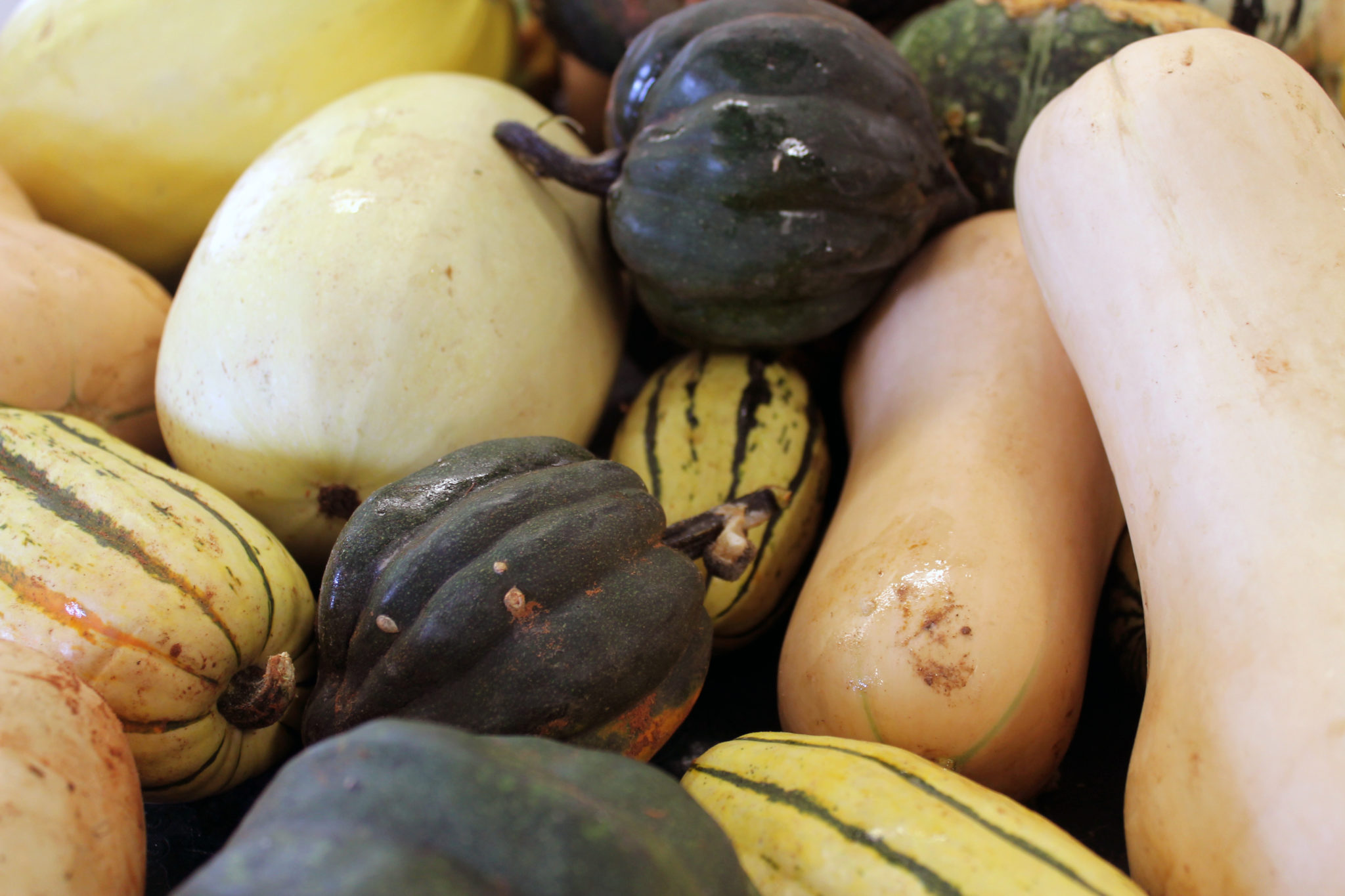
Produce Spotlight: Winter Squash
As the weather cools, winter squash comes into its prime time. Winter squashes differ from summer squash in that the fruit and seeds of the squash have mature and the outside, rind, of the squash has hardened unlike the soft rind of yellow squash or zucchini, which are summer squashes. Winter squash comes in many varieties and is generally in season from August to October.
Varieties
Acorn squash is a small winter squash that is dark green and orange on the outside and orange-yellow inside. The skin of acorn squash is edible and full of fiber that helps lower blood cholesterol.
Butternut squash is pear-shaped with cream-colored skin and orange flesh inside. Butternut squash is known for being the sweetest variety of winter squash.
Pumpkins are another type of winter squash, but the varieties used for cooking and baking are smaller than the large pumpkins used for jack-o-lanterns. Large pumpkins used for decorations are not very flavorful compared to the sweet flavors of smaller varieties.
Spaghetti squash is oval-shaped with yellow skin and flesh. When cooked, the inside of a spaghetti squash resembles strings of spaghetti.
There are many other varieties of winter squash to discover at your farmers market. All winter squash are great roasted or steamed, and some can even be cooked in the microwave!
How to Pick & Store
In general, when picking winter squash to buy, the squash should have a firm outer shell that is free from soft spots and cracks. Winter squashes should feel heavy for their size. Unlike summer squash, winter squash does not need to be stored in the refrigerator. Instead, winter squash should be stored in a cool, dry place like a countertop or pantry, and kept out of sunlight. Winter squash can last one to three months in the right environment and depending on the variety.
Nutrition
Winter squash is high in carotenoids, which work as antioxidants. Antioxidants are helpful for protecting the body from aging and certain diseases such as cancer. Check out these recipes to see how you can use different varieties of winter squash at home.
Recipes
Spaghetti Squash Pie combines winter and summer squash varieties in one easy and tasty recipe!
Harvest Butternut and Beef Stew is a low-sodium stew that is full of flavor and perfect for chilly fall evenings.
Chicken Spaghetti Squash Mac is a delicious way to include a few different vegetables in one meal and only takes 25 minutes!
Braised Lentil and Vegetable Medley is a meatless recipe that can be used with your choice of winter squash so it is perfect for discovering the different flavors of new varieties.
And for dessert, try Oatmeal Pumpkin Bites!



Love winter squashes. Would like some recipes.
Thank you!